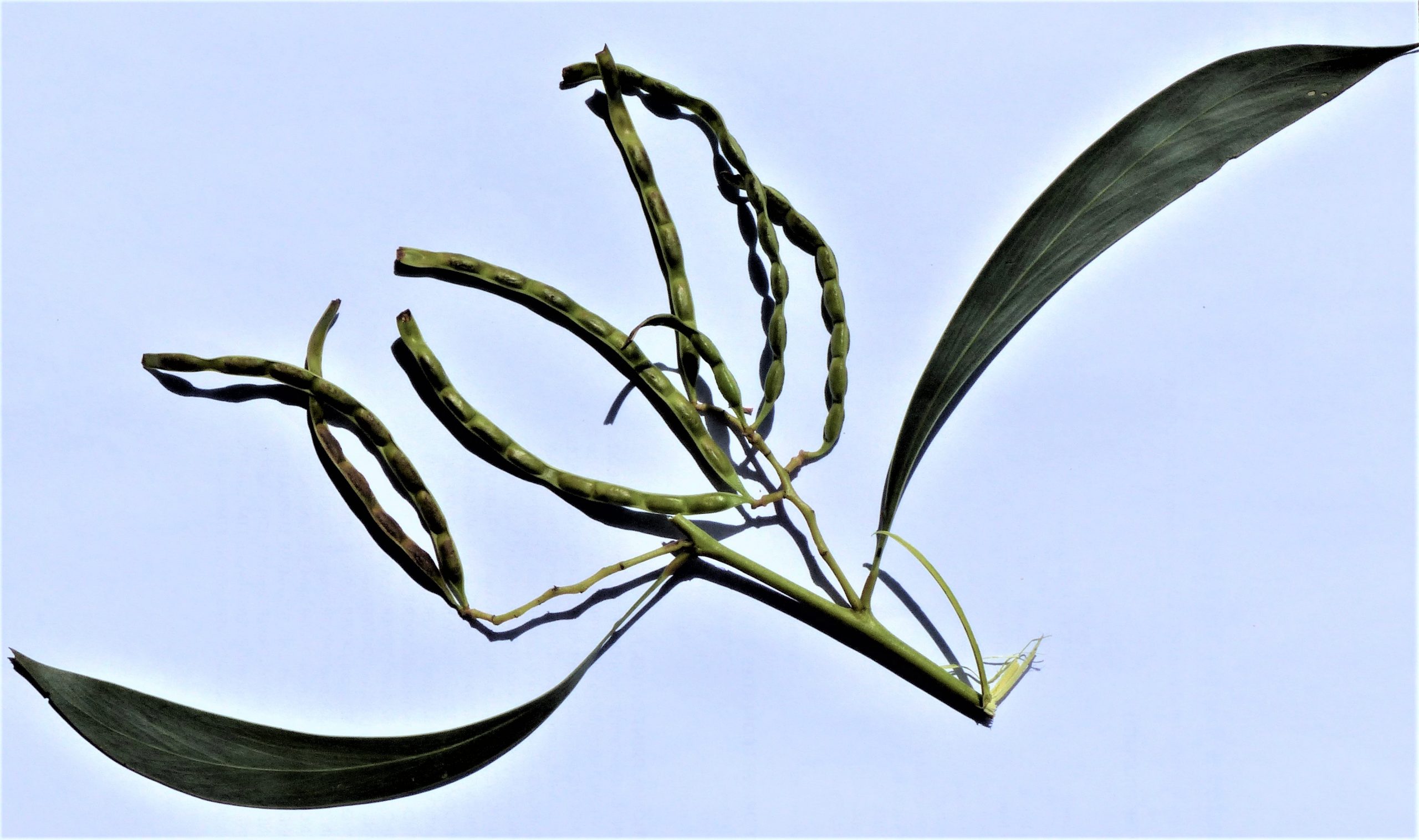Acacia

(Source: Wikipedia Commons)
Most Travellers in Australia encounter a new range of plants once they move out of their own familiar surroundings. This article has drawn together bits and pieces of information about Acacia/Wattle plant groups in the hope that some of the misunderstandings and complexity about Australian plant diversity is simplified.
Acacia is Australia’s largest plant genus and the 1000-odd Acacia species are referred to as wattles. The golden wattle (A. pycnantha) is the Australian National Flower and Australia wide, Acacia’s run second to Eucalypts as having the most forest and woodland trees. In the arid zone Acacia shrublands make up 33% of the area.
When not flowering many Acacia species are distinguished by their leaf shape. Some species such as Cootamundra wattle, Acacia baileyana, retain the true leaf shape that is evident in the seedling stage. These species do not have a single entire leaf blade (the lamina) like an apple tree, but a compound bipinnate one where the lamina is twice divided into small leaflets call pinnules. This unit is attached to the branches with a stalk called the petiole
Acacia
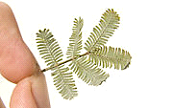
The bipinnate leaf of Cootamundra wattle, Acacia baileyana.
However, for the majority of Acacia species it is the leaf stalk (the petiole) that develops without the formation of a leaf blade and this serves as the main photosynthesising part of the plant. The flattened petioles are called phyllodes, they can be of many shapes and sizes and the majority have what are referred to as nerves (not veins) running along them. Most species have between one and five prominent nerves on their phyllodes but mulga, A. anura as suggested by the Latinised specific epithet anura (’a’ not; ’neura’ nerve), has thin phyllodes without a prominent nerves.
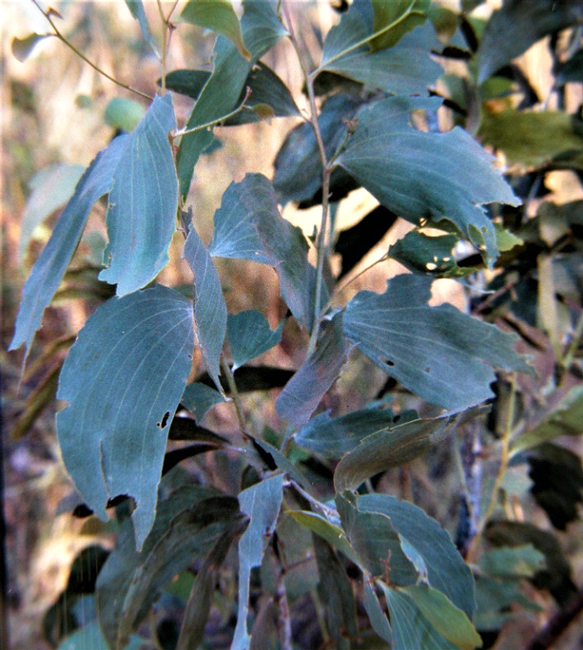
Well chewed large phyllodes of candelabra wattle (Acacia holosericea), east Kimberley, WA. Note the four prominent nerves and the blue grey colour typical for this species.
Occasionally leaves and phyllodes may have spines on the stem located below leaves or phyllodes. In fact, the generic name Acacia is Latin is the Greek word for ‘thorn’. This arose given it was a characteristic of the Type plant, Acacia niloctic, the prickly acacia from Africa was the first species to be scientifically described. This is not a characteristic feature of most Australian endemic species, but A. victoriae, the bramble acacia, common in arid and semi-arid habitats, is one endemic thorny species and is often used by birds, lizards and small mammals for protection from predators.
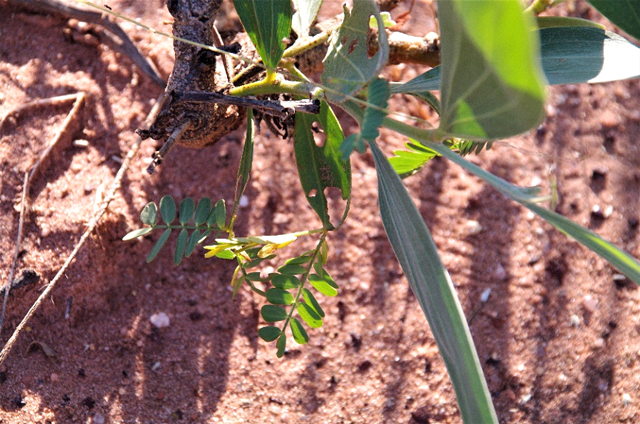
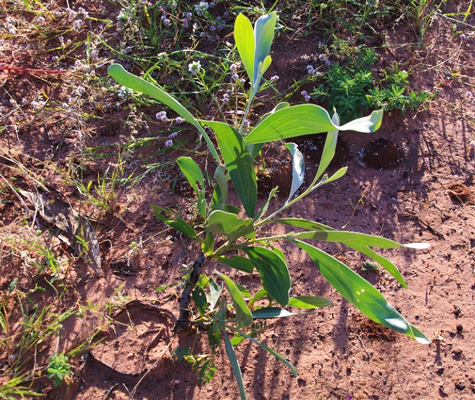
Acacia seedlings and the change with age from bipinnate leaves
with thin phyllodes and their replacement to broad phyllodes
And finally, two other adaptations to arid conditions: mulga has a very deep root system and plants under stress from drought conditions will begin to drop their phyllodes.
Many areas of inland Australia once covered by mulga are now bare of the species with only a scattering of old dead trunks to indicate their past presence. One of the main contributors to this situation is related to their seedlings being vulnerable to the high grazing pressure often inflicted by sheep or rabbits. This factor along with a fairly precise sequence of climatic events necessary for seeding establishment has led to the general demise of mulga.
Wattles are found in most habitats of Australia from alpine heights, the edges of rainforests and across the broad reaches of semi-arid and arid country. Brigalow (A. harpophylla), grew in extensive communities in inland south eastern Queensland and northern New South Wales but due to the favourable soil and rainfall regimes in which it grew the area has been extensively cleared in favour of broad-acre farming cropping.
Many wattle species and varieties have been selected as suitable garden plants and while gardeners generally appreciate their rapid early growth they are disappointed that most species have lifespans less than two decades. This feature contrasts with mulga (A. aneura), a species that has been reported, in the absence of fire, as having a 200 to 300year lifespan. Another of the many drought tolerant Acacias is A. peuce, Birdsville wattle or waddi wood. A small copse of this endangered species found just north of Birdsville in arid southern western Queensland. Like mulga waddi wood may live up to 200 years.
As noted above mulga a very widespread with its densest distribution on nutrient poor soils in arid habitats. Through natural selection at least nine varieties of this species are recognised. Comparative studies on these varieties are likely to demonstrate adaptive differences that are related to the specific habitats conditions in which they naturally grow. A general characteristic of varieties within a species is that they are capable of successfully interbreeding. However, with A.aneura some taxonomists are suggesting that several varieties are so different from the typical mulga that these varieties should be considered as distinct (new) species in their own right.

A lone mulga shrub growing in the stony capping rock, at Kanki – Breakways Conservation Park,
north of Coober Pedy. One way to recognise Acacia aneura is the fact that
its phyllodes are erect (point upwards), a feature visible in the image.
We usually recognise wattle by their fluffy yellow blossoms. Unlike many other plants that gain their floral colour from their petals, wattle flowers have tiny petals and their colour is via their masses of stamens that are in most species yellow. The individual flowers are very small and masses of them are arranged either as spheres or as a cylinder. After successful pollination some of the flowers will develop pods containing seed, pods that hang from the matured flower before splitting open to release its seed.
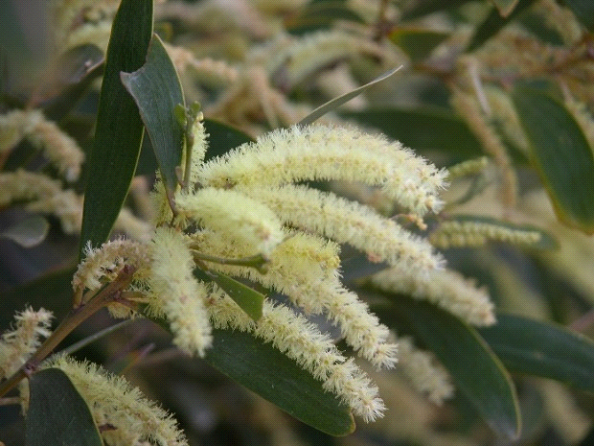
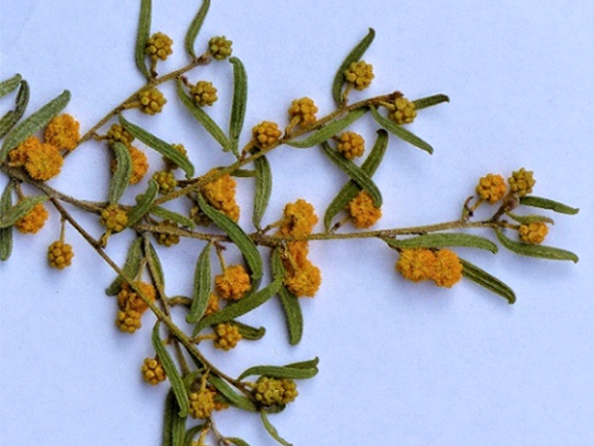
(L)An Acacia species with cylindrical arrangement of the flowers. Wilson’s Headland, N. Wooli in Yuraygir National Park, NSW
(R) A. aneura flowering with many mostly unopened spherical bundles of buds. Coober Pedy, SA.
All wattles fall within a group that have legume like characteristics. Not only do they have pod that splits open when dry to disperse seeds, but they also develop rhizomes on their roots. Specific soil bacteria, Rhizobium, cause legumes to form these rhizome swellings on their roots that are capable of converting nitrogen in the soil air into chemically fixed nitrogen rich compounds within the rhizome. This nitrogen source benefits the plant given that the soils they often grow in are nitrogen poor, such as hind dune sand on beaches, and that these compounds are essential for protein production. This feature enables wattles to colonise nutrient depauperate habitats like the lighter textured sandy soils in the arid area. When the plant dies or the root ages, the rhizome and the protein rich plant parts break down releasing the nitrogen compounds into the soil and of course the seed of legumes including beans, peas and other lentils tend to have high protein levels. It is not surprising that the seed of several wattles are collected, and ground to a flour and prepared as one of the seasonal diet components of many Australian Indigenous clans.
